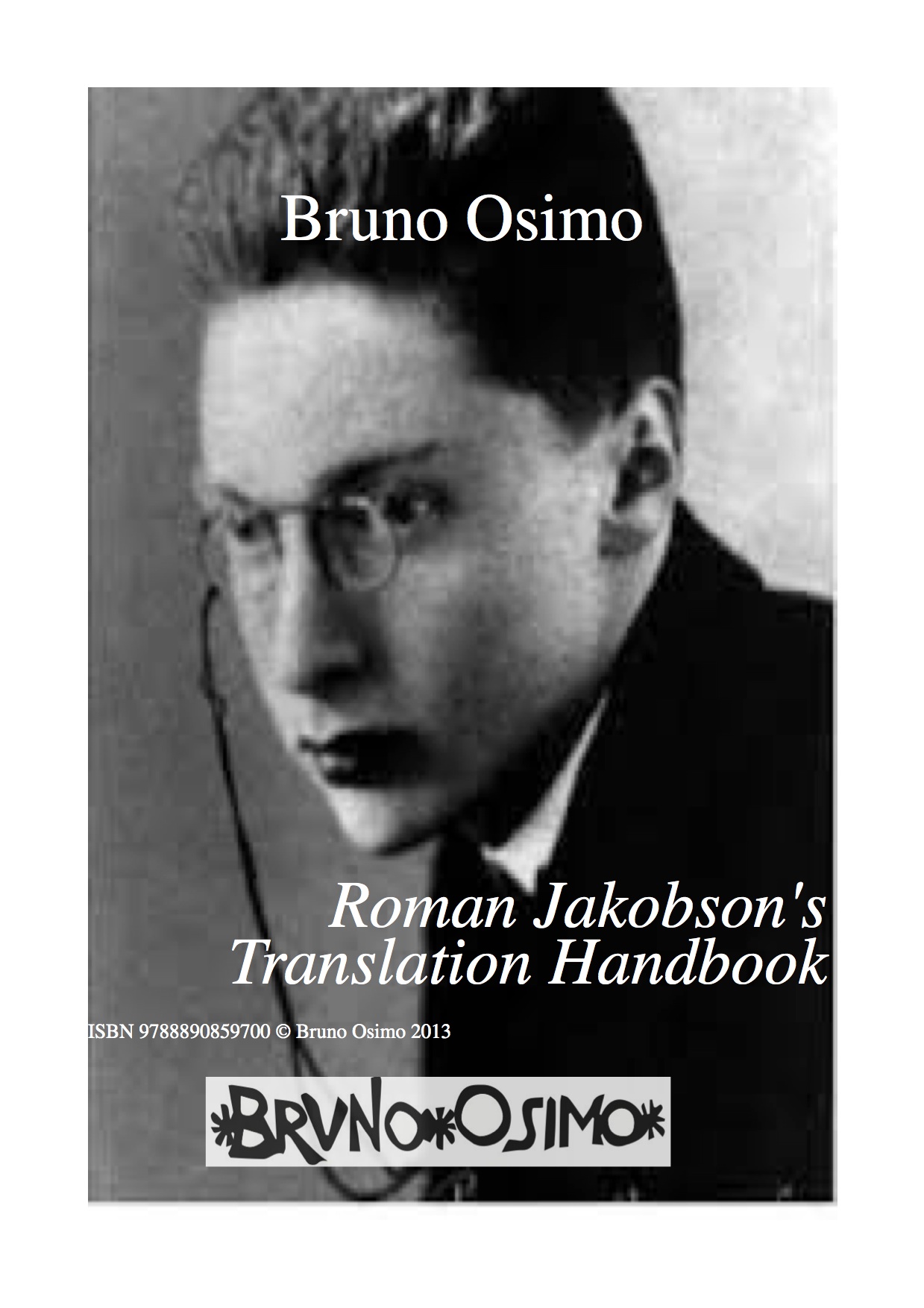Bruno Osimo1
This book is based on the principle that it is possible to create a text out of the writings of an author, focusing on a subject that had not necessarily been considered central or fundamental in the original author’s view. Roman Jakobson wrote many articles and books, that only partially dealt with translation. My intention here is to synthesize his thought on translation by collecting a number of quotations from different papers and essays of different times, originally written in various languages, and rearranging them according to my own criteria.
The result is a series of paragraphs and chapters whose identity derives from the assembling of heterogeneous texts that, however, see one given topic from different perspectives. The first chapters focus on inner language as a nonverbal code, and the consequences of the continuous shift from verbal to nonverbal and viceversa occurring during speech, writing – coding –, hearing, reading – decoding –, and therefore occurring within the translation process itself. The notion of “intersemiotic translation” is considered from a new perspective.
In the central chapter Jakobson’s distinctive features method is applied to translation. Using the similarity/contiguity and imputed/factual variables, taken from Peirce’s writings, Jakobson realizes that one of the four actualizations is missing from Peirce’s treatment. Translation, that according to Jakobson is not equivalence but evolution of sense, may well be imputed similarity, the missing actualization of the aforementioned variables.
In the third chapter the focus is on the difference between humane disciplines and exact sciences, and where translation studies belong. Scientific method should be limited to exact disciplines or extended to humane fields as well? This decision has many implications, starting from the name of our discipline – translation science, translatology, translation studies, translation theory – passing through scientific terminology and arriving to semiotics, that according to Jakobson is the science within which the translation discipline should develop itself. Since in classic times disciplines were divided into trivium (humane fields) and quadrivium (sciences), following Jakobson’s semiotic path would mean to overcome trivium, to get out of triviality, in a sense.
In a slightly different form the three chapters were published as articles as follows:
(2009). Jakobson and the mental phases of translation. Mutatis Mutandis, 2(1), 73 – 84.
(2008) Translation as imputed similarity”. Sign Systems Studies 36.2:315-339.
(2016) Translation from rags to riches in Jakobson. Sign Systems Studies, still to be defined.
http://store.streetlib.com/roman-jakobson-s-translation-handbook
